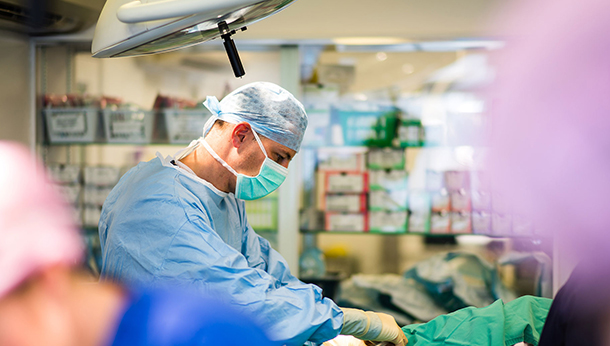
Laparoscopic (“keyhole”) surgery is a minimally invasive option for a number of both routine and non-routine surgeries in veterinary patients. The vets at Grove Lodge have been performing laparoscopic surgery since 2011 and many hundreds of procedures have now been performed.
Bitch spays performed by laparoscopy lead to quicker patient recovery with less post-operative discomfort and are well tolerated by our veterinary patients. Laparoscopic bitch spays have been available at Grove Lodge Vets since 2011 and our surgeons have performed hundreds of these operations. We are delighted with the results and the positive response from our clients, both internal and referral.
The procedure involves inserting a camera and instruments into the patient via “ports” (small incisions) under general anaesthetic. Gas is used to increase the space in the body cavity under general anaesthetic. A camera and instruments are introduced through small incisions to perform the surgery. Electro surgery (i.e. using electric current rather than stitches) is used to close the blood vessels. The incisions are closed with single stitches. It requires specialist equipment and training therefore the procedure will have an additional cost. Keyhole surgery has been the norm in human surgery for many years due to its advantages over open surgery.
Frequently asked questions about laparoscopic spays:
What is it?
Laparoscopy is used for minimally invasive or “keyhole” procedures to minimise post operative pain and discomfort and dramatically shorten recovery times. The most common procedure is a ovariectomy or spay. However we can also remove retained testicles and take biopsies of organs such as the liver.
Can any animal have laparoscopy?
Most animals are suitable candidates, but very small, very large and obese animals are sometimes more difficult to perform surgery on. If you are interested, please discuss with your vet at your pre-operation check.
Are there any possible complications?
In rare circumstances, the surgery may be converted to a routine midline spay. The main reasons for this would be anatomy or bleeding obscuring the surgeon’s view.
Is there any limit on age?
The procedure is safe in both young and geriatric patients, however we recommend preoperative bloods in older patients.
Is it the same as a normal bitch spay?
No, this is less painful and traumatic surgery consequently the rest period and recovery time is significantly reduced.
Is there a risk of future uterine infection with just ovariectomy?
Studies have shown that once the ovaries have been removed there does not appear to be any increased risk of developing uterine infection (also known as pyometras) in the future.
Advantages of laparoscopic surgery:
1. Decreased operative and post op pain therefore lighter anaesthesia and a faster/more predictable recovery
2. No skin stitches and very small surgical incisions (1cm to 2cm)
3. Reduced risk of patient interference/infection with surgical wounds (usually no need for a buster collar)
4. A faster return to normal, pain free activity/exercise post surgery. They can go off the lead in 5 to 7 days.